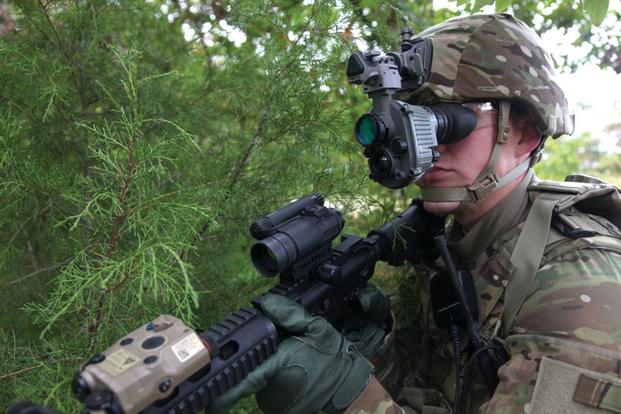U.S. Army officials plan to use some of the extra money in the proposed fiscal 2019 budget to develop new, double-tubed night vision goggles, similar to the type U.S. Special Operations Forces wear.
Currently, most soldiers use basic night-vision PVS-14, which takes ambient light from the stars and the moon. The Army has also been fielding versions of the Enhanced Night Vision Goggle, or ENVG, for almost a decade. Both are single-tube, monocular style NVGs.
The Army's $10.2 billion Research, Development, Technology and Engineering account has money for some "quick wins" in areas such as soldier night vision, Maj. Gen. Paul Chamberlain, Director of the Army Budget office, told defense reporters today.
The $800 million increase over last year's request will help to fund the development of binocular-style NVGs, which will mean enhanced performance for soldiers, Chamberlain said.
"Primarily what it does is it provides additional granularity; it allows for quicker, easier movement when it's being worn," he said. "It is just going to provide that ability to really speed up soldier movements and actions and it does help with depth perception."
It's early in the effort, so details are scarce. It is unclear what this will mean for the ENVG, which features a traditional infrared image intensifier similar to the PVS-14 and a thermal camera. The system fuses the IR with the thermal capability into one display.
Soldiers can choose between IR and thermal, or use both at the same time for an extremely effective tool for spotting the enemy at night or during the day in obscured conditions, such as smoke, fog and sandstorms, Army officials said.
The Army began fielding the first generation of the ENVG in 2009 and has since fielded about 20,000 of the slightly improved ENVG II. The new ENVG III weighs about two pounds and features wireless capability.
Matthew Cox can be reached at matthew.cox@military.com.










